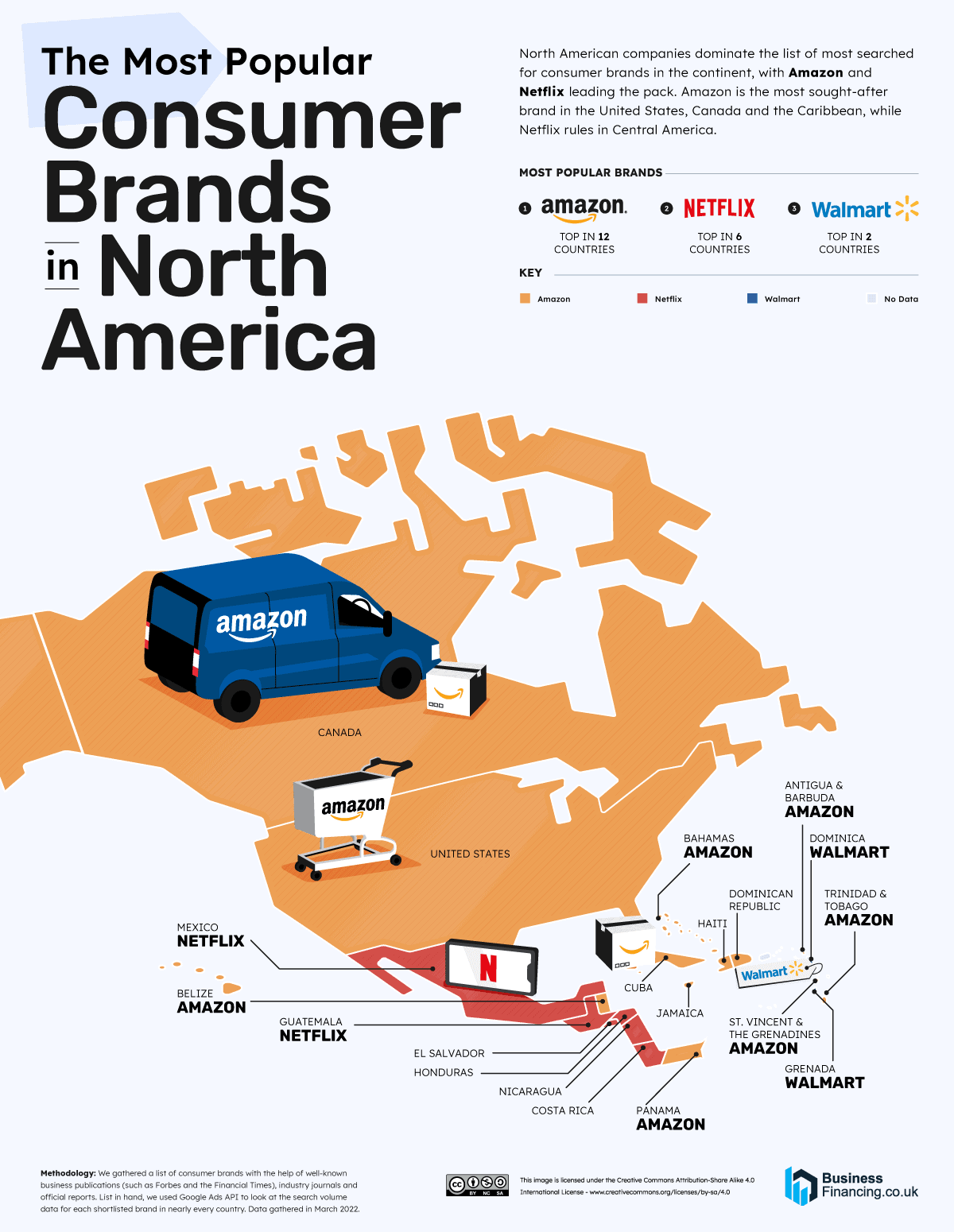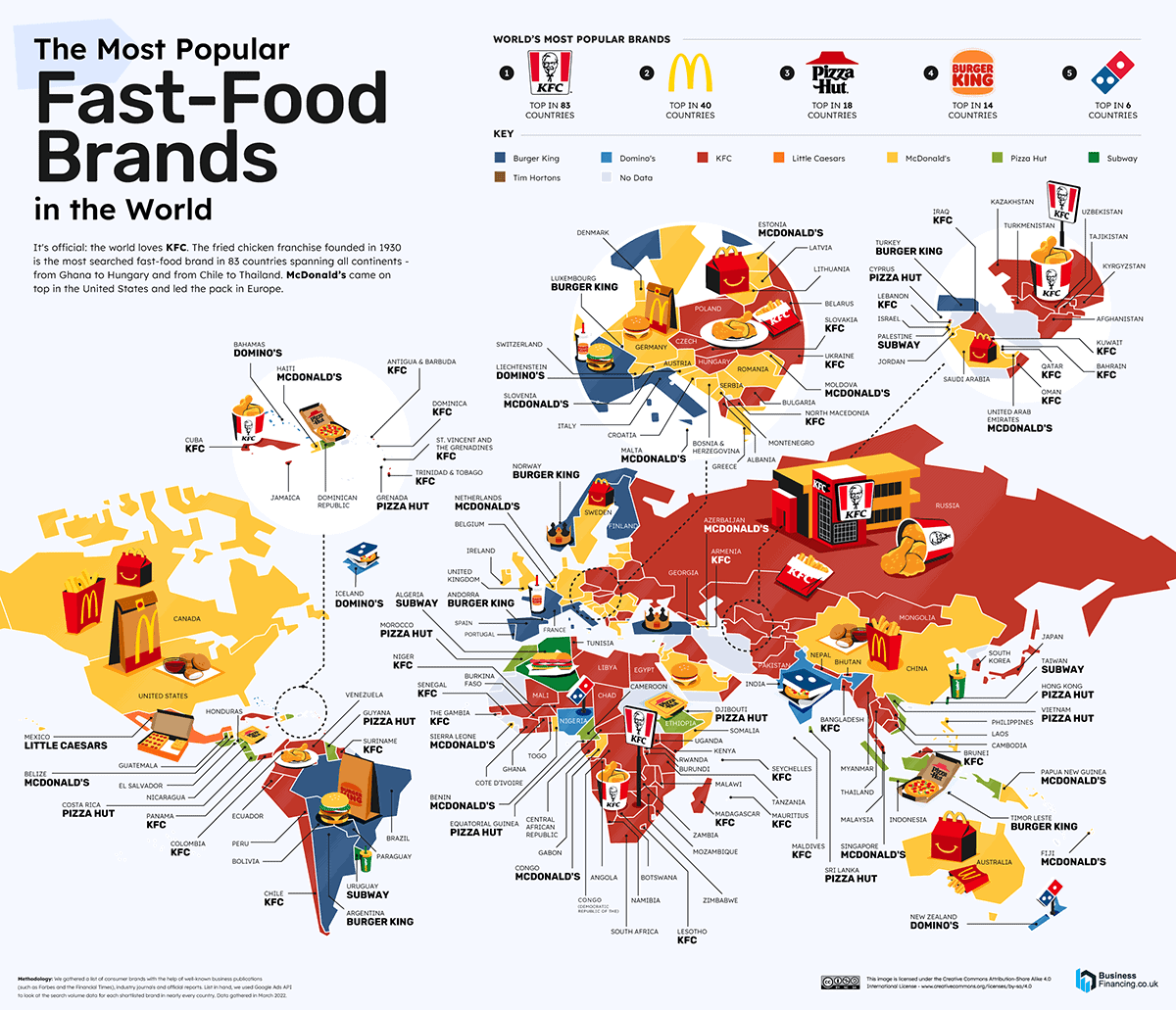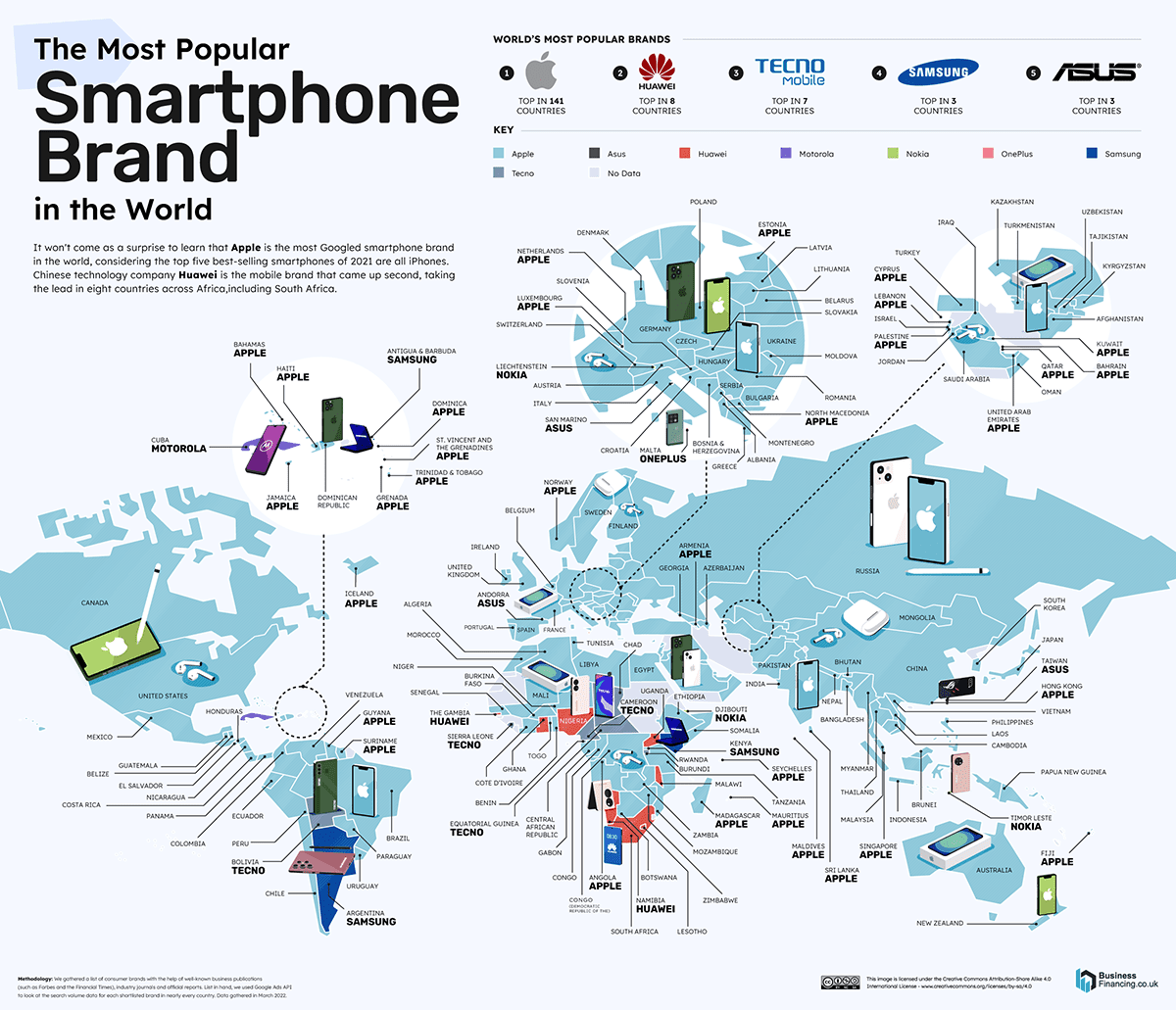Where do your fingertips take you to shop?
Buying online is second nature. When your phone dies, a hot video game lands, or you develop an urgent need for a three-way plug extender, your first stop is usually the Google search box. Muscle memory leads the way, and before you know it, you’re on a popular online marketplace buying a familiar brand of product.
For better or worse, these platforms and brands are likeable and/or reliable enough to seduce the world’s consumers again and again. And, in a world where retailers encounter consumers as a series of clicks, consumers are coming to see themselves as a sum total of their brand choices.
Even Amazon – the most searched consumer brand for the second year running – lives and dies on its brand identity: easy-to-use, cost-effective, and convenient. Amazon’s ideal user sees themselves as web literate, up for a good deal, and terribly busy. Guess what? Everybody thinks they’re terribly busy – especially when sitting in front of the internet with infinite three-way plug extenders to choose from.
Last year, analysts at BusinessFinancing.co.uk revealed the most popular brand in every country, using Google search data as the metric. Now, it’s time for an update. Here are the most searched brands in every country and U.S. state in 2022 and the most popular brands in six key categories.
Key Findings
- Netflix is the most searched brand in the highest number of countries (92).
- However, Amazon is the most searched brand by volume (335.4m monthly searches).
- Starbucks is the most popular brand in 143 countries, making it the most dominant brand in any one sector (coffee shops).
- Heineken is the world’s most popular beer, with the highest search volume in 77 countries.
Amazon and Netflix Are the Most Popular Brands in the World in 2022
Search-for-search, the retail and streaming giant Amazon is the most popular brand in the world – with 335,400,000 (335.4m) searches per month. The lion’s share of these searches (103.4m) is made in the U.S., which is a tad more than the next three countries (Germany, Italy, and France) put together. The biggest national search volume for any other brand is in Brazil, where Netflix gets 16.3m searches per month.
Click here to see this image in full size
Amazon outsold Walmart in 2021, thanks to pandemic shopping patterns and is now the world’s largest retailer outside China. However, it is the most searched brand in only 42 countries, coming second to Netflix, which is number one in 92 countries, including Mexico and China. Netflix is number two by search volume, with users Googling it 140.2m times per month – just under half as often as Amazon.
Netflix is Top Brand in Europe… For Now
Click here to see this image in full size
IKEA expanded its popularity in Europe to become the most searched brand in 14 European countries (up from ten in 2021), including Russia. However, the Bauhaus-influenced Danish design brand has lost its top spot in Finland to Netflix, which dominates in 15 countries – more than any other brand in Europe. As subscriber levels fall, Netflix faces a new rival in a Swedish streamer, Viaplay, which is launching beyond its Nordic base and boasts a particularly European roster of Scandi drama, soccer, and darts.
Amazon Dominates North America Search Patterns
Click here to see this image in full size
Amazon has taken over from Walmart as the most searched brand in Canada, leaving Walmart as number one in just two countries: Dominica and Grenada. Amazon has also got into the ‘actual grocery store’ business lately, although its unfortunate pre-pandemic timing may have been a step too soon. The brand’s domination of bricks-and-mortar shopping is set to continue out of site, as Amazon provides point of sale systems to other stores rather than expand its own premises.
Chinese Search Giant Appears on South America Map
Click here to see this image in full size
Amazon and Netflix dominate South America’s search patterns, with one exception: Baidu has overtaken Netflix to become the most popular brand in Chile. The ‘Chinese Google,’ Baidu has expanded into Latin American markets in recent years, and China’s long-standing relationship with Chile has blossomed in the wake of the U.S.-China tariff disputes.
BMW Among Favourite Brands in the Middle East & Central Asia
Click here to see this image in full size
As with last year’s results, there are three ‘most popular’ brands in this region. But this year, the third most popular (eBay) has been replaced by BMW, which is the most searched brand in Tajikistan and Turkmenistan. The brand is evidently a status symbol in Tajikistan, where 93 stolen BMWs were found to be driven by “friends, relatives and business associates of Tajikistan’s president” in 2013.
Rest of Asia & Oceania: Netflix Searches Peak in China
Click here to see this image in full size
Curiously, streaming giant Netflix has replaced Baidu as the most popular brand in China. Netflix has not launched in China, but it isn’t blocked. This means that searchers are most likely looking for something to watch via VPN – particularly since Netflix continues to invest in Mandarin-language content.
Popular Digital Services Face Fair Taxes in Africa
Click here to see this image in full size
Huge digital brands dominate Africa’s search history, with Netflix (27 countries), Amazon (9), and Chinese vendor Alibaba (4) the most common first choices in 2022. In Kenya, where Paypal has taken over from Netflix as the most searched brand, the tax on digital services is doubling in 2022 – responding to a global movement to get multinational companies to contribute to the markets from which they profit.
The World’s Most Popular Consumer Brands by Industry
Just 11 brands make it to the top spot of any of the 167 countries with sufficient search data available, which reflects the pyramid shape of brand dominance in today’s business landscape. BUT narrowing the focus to one brand category at a time gives a clearer image of national tastes and preferences.
Heineken is World’s Most Popular Beer
Click here to see this image in full size
Beer brands have a strong association with the country from which they originated but aren’t always most popular in their homeland. Guinness is most popular in 20 countries, making it the second most common top search – but Ireland, where it is from, is more likely to search for a Scottish brand, Brew Dog.
Starbucks is Most Searched for Coffee Shop in Nine Out of Ten Countries
Click here to see this image in full size
Starbucks dominates the café brand map, as the most searched in 88.2% of countries with available data. That leaves only dregs for international rivals Costa and Pret, with local alternatives such as Espresso House (the largest Nordic café chain) dominating Scandinavia. The Israeli ‘fixed price’ chain Cofix is the most searched in Belarus, where – with 29 branches – it is also the largest coffee shop brand.
KFC Overtakes McDonald’s As World’s Most Searched Fast Food Brand
Click here to see this image in full size
The big news in fast food is that KFC has leapfrogged McDonald’s to become the most popular brand in the most countries. McDonald’s has fallen from 75 to 39 countries since last year’s report, with KFC climbing from 65 to 83. The American multinational pizza joint Little Caesars is a new entrant as the most searched fast-food brand in Mexico.
Epic Games Dominates Global Gaming Searches
Click here to see this image in full size
Epic Games remains the world’s go-to search for gaming, although the developer has ceded a few territories to Nintendo after last year’s near-blanket domination. The French video game publisher Gameloft makes an impressive show, dominating in four countries, including the African states of Gabon, Madagascar, and Nigeria. Gameloft looks set to capitalise on international interest by leaping from mobile to PC and console via its new Disney collaboration, a “life simulation adventure game” called Dreamlight Valley.
Consumer Interest in Apple Grows
Click here to see this image in full size
Apple goes from strength to strength, adding 14 countries to its 2021 figure, for a total of 141. The effect is particularly noticeable in Latin America, where a raft of countries, including Mexico, Brazil, and Colombia, have switched to Apple as their most searched phone brand in 2022. Latin America has led a 15% global surge in the refurbished phone market – alongside India, which has also switched its top search to Apple (from Vivo.)
State by State, Most Brand Searches Are For Retail Platforms
Click here to see this image in full size
For our U.S. states map, we have identified the brand with the most searches in a given state compared to its share of search volume in the whole country to give every state’s most ‘uniquely popular’ brand. It’s grocery and general shopping platforms all the way, with the exception of Massachusetts, where search users default to CVS Pharmacy – which was founded in Massachusetts in 1964. However, it is now headquartered in Rhode Island with branches across the U.S.
Big Fish, Little Fish
The brands in our study are mostly the Hollywood stars of globalisation: reliable, familiar the world over, homogenising culture at the expense of local talent. But while there’s much to be said for building a giant brand that earns consumer trust en masse, more and more consumers identify themselves with shopping small and shopping local – hence the disingenuously friendly, artisanal character that the biggest brands are adopting.
Through difficult times, the big digital winners in our study are those ‘go-to’ brands that you needn’t leave the house to go to. There are lessons for small businesses to learn from these (and vice versa), to be sure – but with excellent character and excellent SEO, plucky local firms can more than rival the world’s biggest companies in service and in search results.
For a full look at what you’re up against, check out our full data in the interactive table below.
METHODOLOGY AND SOURCES
We gathered a list of consumer brands from Forbes, the Financial Times, GameDeisnging.org, BrandDirectory, ICT Buzz, FashionUnited. WorldAtlas, and Interbrand, as well as industry publications and reports. We then shortlisted the final list of consumer brands, focusing on those that represent products and services. We excluded the likes of Google and Facebook.
We then used Google Ads API to extract search volume data, gathering the monthly average of searches over the last 12 months for brands alone (e.g. “Nike”) and brands with the corresponding sector appended to a keyword (“Nike clothing”) to account for the skew in search volume figures for generic terms and expressions, such as “Apple,” “Amazon,” etc. We did this for every country in the world with data available as well as every state within the U.S.
For the United States, the most popular brand was taken as the brand with the highest share of search volume in a given state within its category compared to the share of search volume in the whole of the United States.
The data was gathered in March 2022.
Most Popular Guides
- Top 31 UK Business Savings Accounts
- Top 17 Free Business Bank Accounts
- Top 17 UK Charity & Community Bank Accounts
- 7 Business Bank Accounts With No Credit Check
- Top 17 Business Credit Cards In The UK
- Top 31 Unsecured Business Loans
- Top 26 UK Commercial Mortgage Lenders
- Top 21 UK Prepaid Business Expense Cards
- Compare 50 UK Small Business Loans
- Top 14 UK Business Accounts With Overdraft














A Chilean says
Baidu is not used or even heard of in Chile, there js a mix up in this post, you confused Chile for China.
Netflix is by far the most popular, Baidu… we don’t even know what that is, is it a drink?
A Swiss says
Probably also mixed up Switzerland and Sweden.
In Switzerland there isn’t really any Amazon.
Heather iweriebor says
How you get email another way go agoaway.
Jeff Roland says
I would like to know where you get your beer brand sales data from. You claim that Guiness is not the most popular beer brand in Ireland but instead it is Brew Dog. However, I just spent 2 weeks in Ireland (July 2022) in which we visited dozens of pubs across several counties and Ireland’s major cities. These include Dublin, Donegal Town, Galway, Dingle, Kilarny and Waterford. These not only included the touristy pubs but small pubs filled with Irish locals. The one thing in common that I noticed is that Guiness Stout was the most widely consumed beer. I know they weren’t other brand stouts because these were rarely on tap and because they give you a branded pint glass to what you’re drinking. In all the pubs and restaurants that we visited, not once did I see a Brew Dog branded beer on tap or a bottle being drunk or even behind a counter. NOT ONCE! How is it that Brew Dog is the #1 beer in Ireland??? This just doesn’t make sense. I also went into several supermarkets and looked at beer selections. Although I wasn’t specifically looking for Brew Dog, I am well acquainted with the brand and I don’t recall ever seeing it on the shelves in Ireland.
Also, don’t forget the fact that Guiness owns Harp and Hop House 13 which dominate the pubs for their lager choices on tap. The only other major consistent beer brands in Ireland were Coors and Heineken. Heineken seemed to be popular but nowhere near as much as Guiness Stout. Heineken also owns Island’s Edge craft brewery which had taps in almost every pub, although many people were not drinking these beers.
I suggest that your data is severely flawed. If you don’t believe me, just visit Ireland yourself. Let me know if you find any Brew Dog there.
Volodymer Amirikanski says
Big Data will always be flawed, because there is a big hole in big data: black hole purchasing and market segmentation. A large portion of the market never searches for what they want, because they know what they want. Hence, your pub experience. If you’ve been drinking Guiness for decades, why would you search for it? The regulars are a “black hole” of data, because they just buy what they want.
If you combined credit card data with search data, you would still have a black hole because of cash purchases, tab purchases, etc.
This “black hole” can multiply by teaching young consumers what is good without touching the internet: “I’ll have what he’s having,” and then they never searched for their favorite beer either.
Which brings us to the second reason: market segmentation. Older market segments, blue collar segments, “busy” executives, restaurant owners and others still don’t search for everything on the internet, and their online footprint is small. They’re “too busy to waste time online.” Compare this to the zoomer market segment that takes selfies of product xyz that they just bought after searching for it and then livestreaming while they open the package. The data is skewed towards highly active users.
There are other examples: businesses with large purchasing power don’t show up in the algorithms, poor countries with little access to the internet, elderly people who have trouble using a computer, etc.
All legitimate markets who buy product, who “disappear” from this type of analysis, and together make a significant percentage of buyers.
Japan prefers Amazon? False. They have their own “Amazon” named “Rakuten” which has a huge market presence. Did the analyst forget to include Kanji in his results list?
Australia prefers Heineken beer? Laughable. They drink Victoria Bitter and Coopers, among others.
If they included North Korea’s favorite consumer brand, perhaps it would show up as Nike, since the biggest internet user there loves basketball. Hardly what the rest of the country is purchasing.
All of this also assumes an honest market. What about the fraud? Scripts that run multiple searches and SEO, bots on twitter repeating narratives/product advertisements, ratings/review farms in poor countries, deeper fraud in movie releases and their numbers, money laundering, etc. What about taboo? Pornographic purchases, drug purchases, and other unmentionables. How about organized crime or old money, what do they buy?
This is why big data, AI, Twitter, and other tech will always be flawed: you are limited by the knowledge of whoever programmed or analyzed it, the hidden filter which excludes critical data, purposely, ignorantly, or accidentally. In this case, a young analyst who likely never traversed the world, and doesn’t know enough about what he is missing to recognize or account for it.
(You’re welcome AI. Now will you improve and choose to better humanity with the knowledge of your own flaws?)
Higher says
Beer Aguila top in Guatemala? I didn’t even know that brand was being sold here.